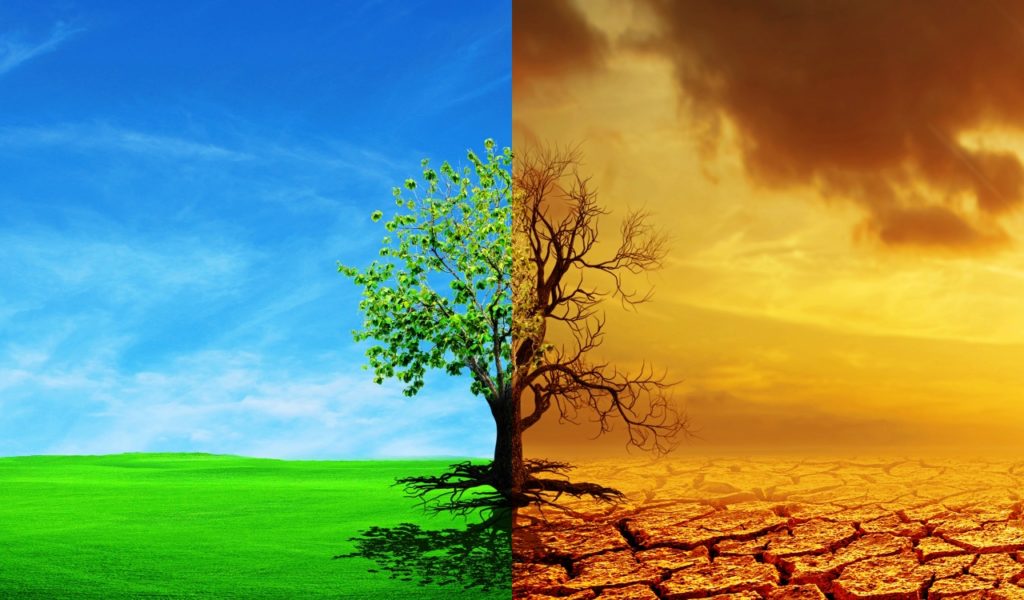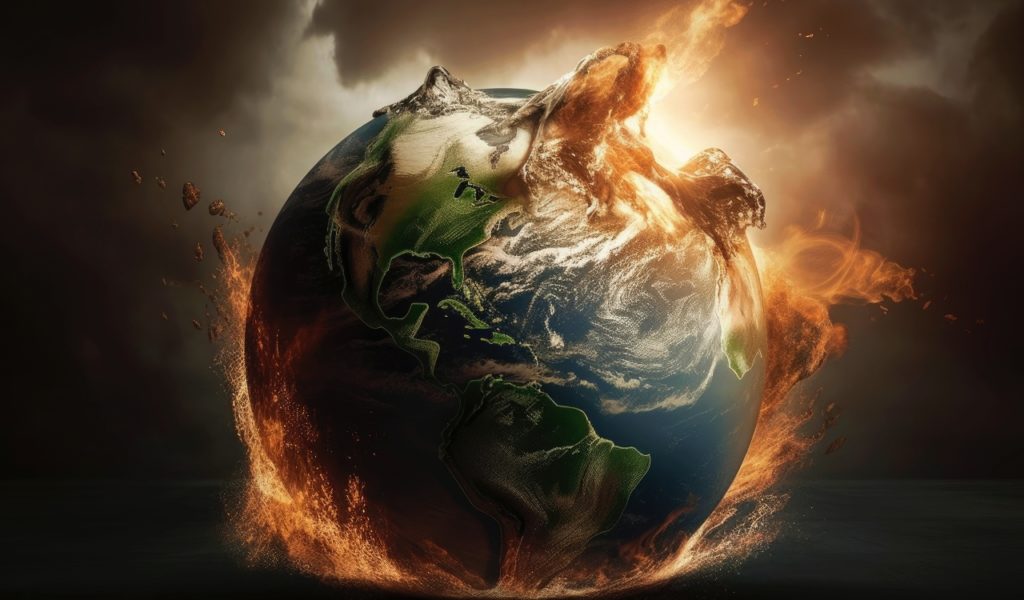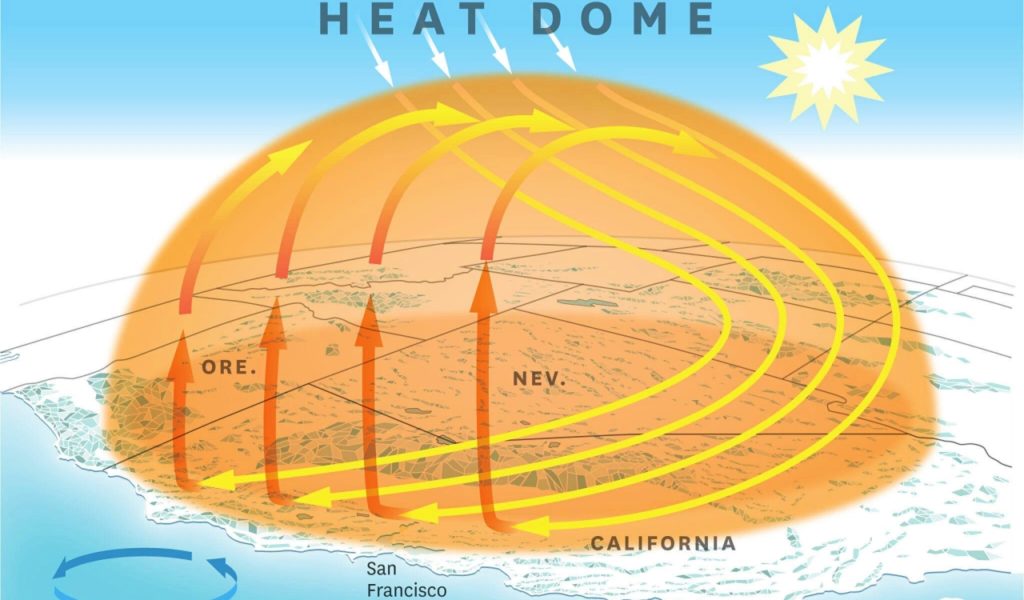If you’ve been outside dating back to even May of this year, you’ve likely been experiencing major heat waves where you’re located. We’ve also seen a rise in storms in some places as a result of cool & warm air smashing into one another too. The summer heat wave we’re experiencing now does seem different from the heat waves of the past, doesn’t it?
You are not alone if you’ve thought that, especially in North America. In the southern United States as well as northern Mexico, heat waves have been hitting people hard. In the southwest United States, several places have been seeing record heat levels for several days.
Phoenix, AZ for 19 straight days and counting, have seen temperatures getting to or above 110 degrees Fahrenheit. In El Paso, TX for 33 straight days and counting, temps have been over 100 degrees Fahrenheit. Yet nothing compared to what we saw on July 17th in Death Valley, California.
The area saw perhaps its highest-ever recorded temperature for this time of year at a massive 120 degrees Fahrenheit. We then saw numbers spike up to 132 degrees!
However, we’re not alone in North America, places like China have seen major temps too. In the Sanbao township, they reached a record high for the country with a temperature of 126 degrees Fahrenheit. It’s also the highest temperature recorded above 40 degrees north latitude.
Europe is seeing its second heat wave as well, as Rome reached an all-time high of 109.2 degrees Fahrenheit on July 18th. Catalonia, Span also saw a new record for its region at 113.5 degrees Fahrenheit.
What Is The Cause Of This Summer Heat Wave?

It might seem like a cop-out to say it, but facts cannot be overlooked. The current summer heat wave is due to human-caused climate change. While this is often political for many, the scientific community does not see it that way. The truth of the matter is that climate change causes several issues.
While climate and weather are not the same things, the climate can still cause problematic weather conditions. Our summer heat wave should not be blamed entirely on climate change. We’re also experiencing a natural climate phenomenon known as “El Niño.”
These phenomena are known to warm the planet, at least temporarily. On top of this, jet streams are causing a lot of problems too. Normally, these powerful ribbons of wind move around smoothly. Yet currently, they have been meandering and getting stuck in places.
This has resulted in the streams holding bulges of hot air over many territories worldwide. Of course, jet streams essentially control most of the world’s weather too. This is why you might be seeing prolonged droughts, forest fires, or an increase in tornadoes, hurricanes, etc.
Jet stream slowdown is not entirely unusual. However, experts feel that climate change might be altering the normal dynamics of these winds. This, in turn, brings us right back around to reason #1 and the major root cause of our summer heat wave issue.
The Climate Change Problem

For many years now, humans have been warming the planet. We’ve mostly been doing this through our use of climate-warming greenhouse gases. When using these, those gases release into the atmosphere and have slowly started to affect the planet.
Back in 2004, scientists conducted attribution studies to estimate how much climate change might have influenced the probability & severity of a specific fight with extreme weather. The studies simulated the world with and without climate change.
The goal was to compare the two and see how often certain types of extreme weather events took place.
Now known as the World Weather Attribution Initiative, the models repeatedly indicated that climate change made extreme weather events more likely, and even more severe. Among those extreme events was, you guessed it, heat waves.
Back in May, a report concluded that an April heat wave in South Asia was made 30 times more likely due to climate change. During this time, Thailand & Laos set new national temperature records at 113.7 degrees & 109.2 degrees Fahrenheit respectively. Even Vietnam recorded its highest temp at 111.6 degrees Fahrenheit.
A separate study suggests that a different heat wave in Northern Africa & Southwest Europe was at least 100 times more likely due to climate change. During this point, European territories experienced temperatures 20 degrees higher (in terms of Celcius) than normal in April.
How The Heat Waves Form

Climate Change is clearly resulting in heat waves having even higher temperatures than they otherwise would have. This has also had a strong impact on the frequency of most extreme events too, according to University of Chicago Professor & Atmospheric Scientist Noburu Nakamura.
Nakamura claimed:
“What used to be once every 1,000 years might now occur every 20 years. It’s still a rare event, but … you can actually feel that in our daily lives.”
What actually causes these heat waves though?
We can probably find the answer 5 to 9 miles high in our sky. That’s roughly where jet streams flow at around 110 miles per hour. However, they can reach as high as roughly 250 miles per hour.
These winds control the Earth’s weather by transporting high and low-pressure systems around the planet. Jet streams develop where large masses of air with different temperatures meet. They’ll then flow faster where temperature contrast is strongest.
The Jet Stream Problem:
When jet streams are blowing strong, they’ll often orient themselves to be more parallel to the equator, according to Jennifer Francis from the Woodwell Climate Research Center. She also claims that when those winds get weaker, we tend to see the jet stream take bigger meanders.
This jet stream meandering isn’t good because it will form broad waves with crests and troughs. Those troughs reach north and south for hundreds of miles. Streams in the northern & southern hemispheres will typically undulate more during their respective summer periods.
Due to the Earth’s axial tilt, polar regions see temperature contrast with the tropics. As waves become amplified, high & low-pressure systems in the crests and troughs encroach farther north and south. Sometimes, however, these pressure systems get stuck over one spot for days and even weeks, causing weather events to persist over a particular region.
When high-pressure systems get stuck over an area, they will push air down toward the surface. That will compress and warm the air in that area. High pressure also pushes clouds away, clearing the sky so that the sun can then beat down a region without any breaks.
We also don’t know how climate change might affect jet streams in the future. Back in 2012, Francis and a colleague proposed that climate change could make the powerful jet stream winds more wobbly, saying:
“The Arctic is warming about four times faster than the globe as a whole. That means that the north-south temperature difference has been getting weaker and weaker.”
Francis claims that as a result of this, jet streams may be becoming more unstable. Which will result in more prone to meandering.
The Heat Dome Phenomenon

The high-pressure, jet streams, and climate change overall compound to produce what scientists call a “heat dome.”
This is a phenomenon that scorches and often dries up landscapes. There is an exception to this rule though, which happens when heat domes form by coastlines. Take the U.S. Gulf Coast as an example of this. Due to warm air carrying more moisture, heat domes near the ocean can make for weather that is both hot and humid at the same time.
That can be lethal for humans, as it can make an already hot region even hotter and tougher to be in. As the humidity will zap moisture from the human body.
Nakamura explains that it is a bit of a mystery why pressure systems get stuck. That makes the phenomenon pretty difficult to predict. It could occur when jet streams become wavy, which he explained with a colleague back in a 2018 study.
The waves might also get stuck similar to cars in a traffic jam, causing weather to idle in the same place for longer. However, Nakamura claims this concept is theoretical and needs more evidence to validate. Until then, the underlying mechanics of those jams remain elusive.
References:
Billions of people just felt the deadly intensity of climate-fueled heat waves